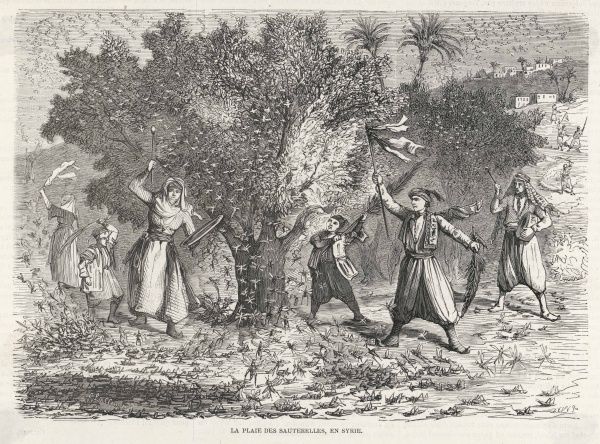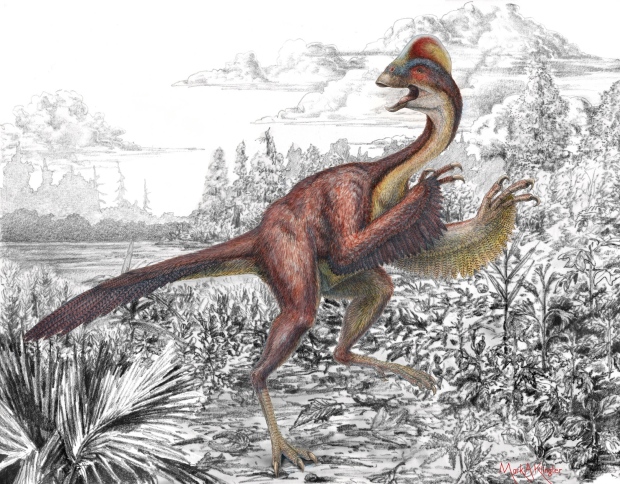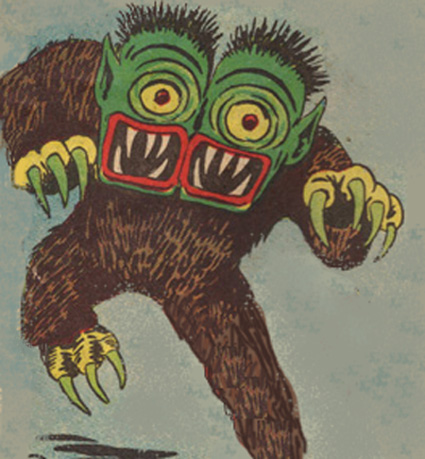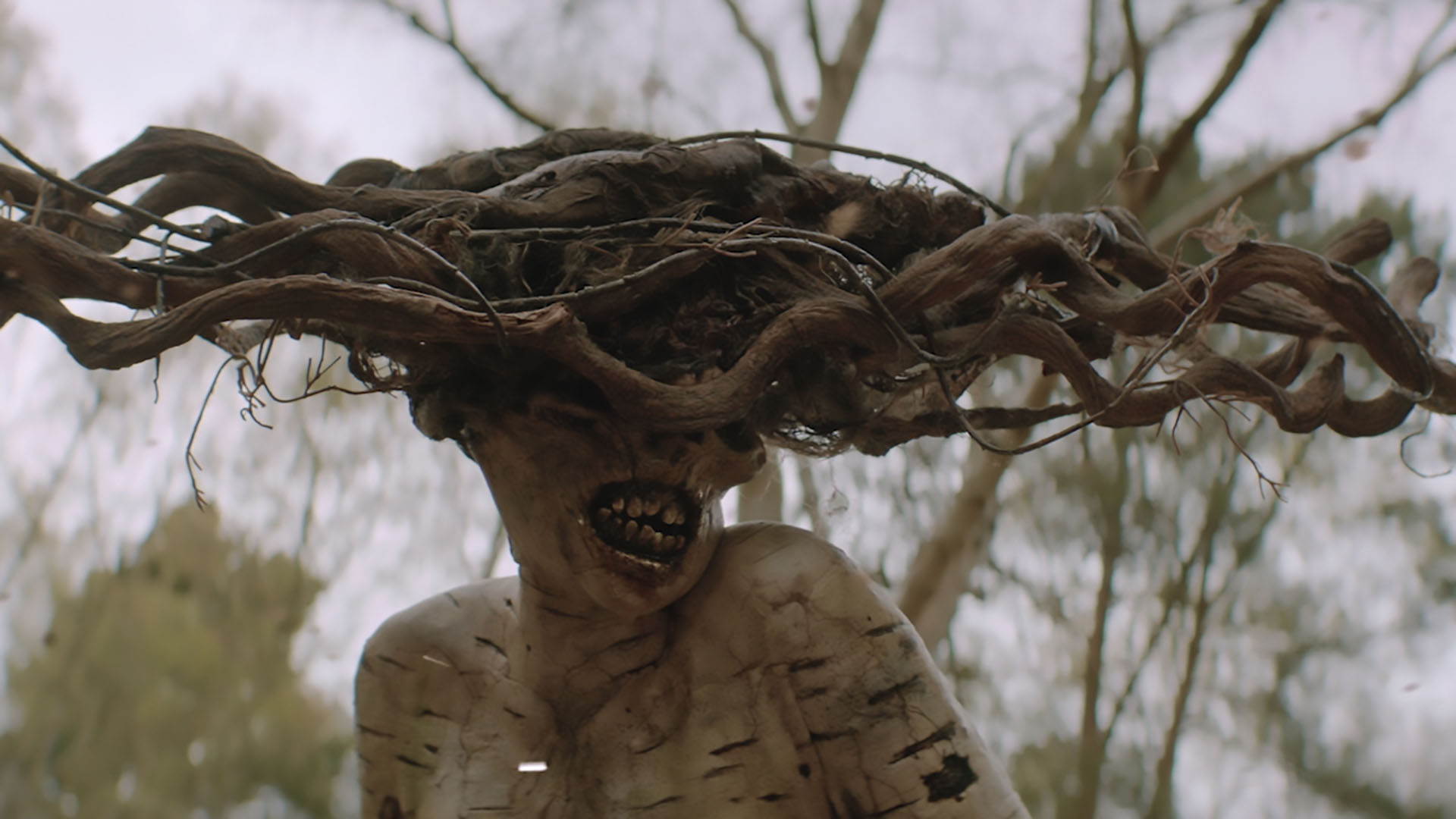The Fifth Day
No history lesson with today’s post. Just a post. I was tempted to go for the obvious on day five and write up five magical rings. As you can see, I resisted temptation. The spells marked with an asterisk that are listed for the AD&D version of the monster all come from Oriental Adventures. (N.B. That link is an affiliate link.)
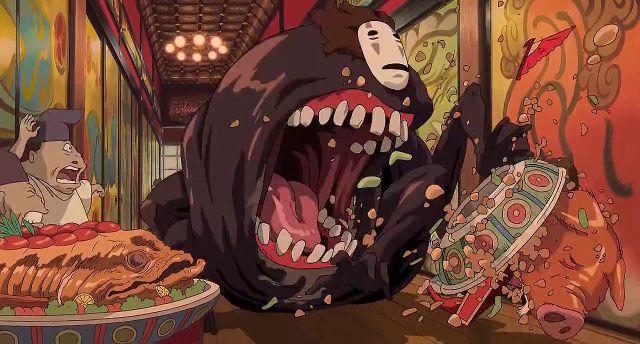
On the fifth day of searching / My party came upon: / five hungry things, / four burning swarms, / three hell birds, / two bloodmad zogs, / and a birchwrath in a fell wood.
The hungry thing is an unpredictable spirit creature. It embodies hunger, and in life it was most likely a gluttonous person. Commoners fear the hungry thing, for its appetite cannot be sated, and a single hungry thing can devour much if not all of what a village may have to feed its populace. Worse still, the hungry thing’s obsessive need to eat may lead it to consume living creatures, including sentient ones such as humans.
AD&D Version
Frequency: Very rare
No. Appearing: 1-6
Armor Class: 2
Move: 9″/12″
Hit Dice: 8+8
% in Lair: 10%
Treasure Type: G
No. of Attacks: 1
Damage/Attack: 2-16
Special Attacks: See below
Special Defenses: See below
Magic Resistance: 60%
Intelligence: Average
Alignment: Chaotic neutral
Size: M to L (5′ to 12′ tall)
Psionic Ability: Nil
Attack/Defense Modes: Nil
Level/XP Value: VII/2,000 + 12/hp
The hungry thing is a lesser spirit. It has several supernatural powers, which it can employ at will, one at a time, during a turn or melee round as applicable: become ethereal, ghost light, invisibility (self only), polymorph self, telekinesis (up to 2,000 gold pieces weight), and wind breath. The hungry thing can only be hit by magical weapons.
The hungry thing attacks with its bite, which is strong enough to inflcit 1 point of structural damage on fortifications. Wounds inflicted by this bite do not heal naturally. Magical healing is required. The hungry thing regains lost hit points equal to the damage it inflicts with a bite. With every successful bite attack, the hungry thing grows 1 foot. When it reaches 8 feet tall, the hungry thing becomes size large, and it flies into a feeding frenzy that lasts for 5-10 melee rounds. While in a feeding frenzy, the hungry thing attacks twice per round, and it cannot distinguish between friend or foe.
5E D&D Version
Medium undead, chaotic neutral
Armor Class 16 (natural armor)
Hit Points 104 (16d8+32)
Speed 20 ft., fly 30 ft.
Ability Scores STR 17 (+3), DEX 10 (+0), CON 14 (+2), INT 11 (+0), WIS 8 (-1), CHA 13 (+1)
Damage Resistances necrotic
Damage Immunities poison; bludgeoning, piercing, and slashing from nonmagical attacks
Condition Immunities charmed, exhausted, poisoned
Senses darkvision 60 ft., passive Perception 9
Languages any it knew in life
Challenge 9 (5,000 XP)
Frenzied Bites. While in a feeding frenzy, the hungry thing may make a bite attack as a bonus action.
Innate Spellcasting. The hungry thing’s innate spellcasting ability is Charisma (spell save DC 13). It can innately cast the following spells, requiring no material components:
At will: alter self, etherealness (self only), invisibility (self only), telekinesis
Siege Monster. The hungry thing deals double damage to objects and structures.
Actions
Bite. Melee Weapon Attack: +7 to hit, reach 5 ft., one creature. Hit: 7 (1d8+3) bludgeoning damage plus 4 (1d8) necrotic damage. The target’s hit point maximum is reduced by an amount equal to the necrotic damage taken, and the hungry thing regains hit points equal to that amount. The reduction lasts until removed by a cure wounds spell or other magic. The target dies if its hit point maximum is reduced to 0.
Ghost Light (Recharge 6). The hungry thing magically creates a glowing orb of spectral light that sheds dim light in a 10-foot radius for 1 minute. As an action on its turn, the hungry thing can move the ghost light up to 30 feet to a new spot within 120 feet that it can see. A creature that starts its turn in the radius of the ghost light must succeed on a DC 16 Wisdom saving throw or become frightened for 1 minute. If the creature ends its turn in a location where it does not have line of sight to the ghost light, the creature can make a Wisdom saving throw. On a successful save, the creature is no longer frightened. The ghost light ends if the hungry thing dismisses it as a bonus action or creates a new ghost light.
Wind Breath (Recharge 6). The hungry thing exhales wind in a 60-foot cone. Each creature in that area must succeed on a DC 16 Dexterity saving throw or take 10 (2d6+3) bludgeoning damage and be knocked prone. Open flames in the area are extinguished.
Reactions
Feeding Frenzy (Recharges after a Short or Long Rest). When the hungry thing inflicts bite damage on a creature, it must succeed on a DC 16 Wisdom saving throw or fly into a feeding frenzy. In a feeding frenzy, the hungry thing’s size becomes Large. It has advantage on Strength checks and Strength saving throws. Its bite attack deals 2 (1d4) extra bludgeoning damage. The feeding frenzy lasts for 1 minute, and during this time the hungry thing must move toward and attack the nearest creature, if possible.
